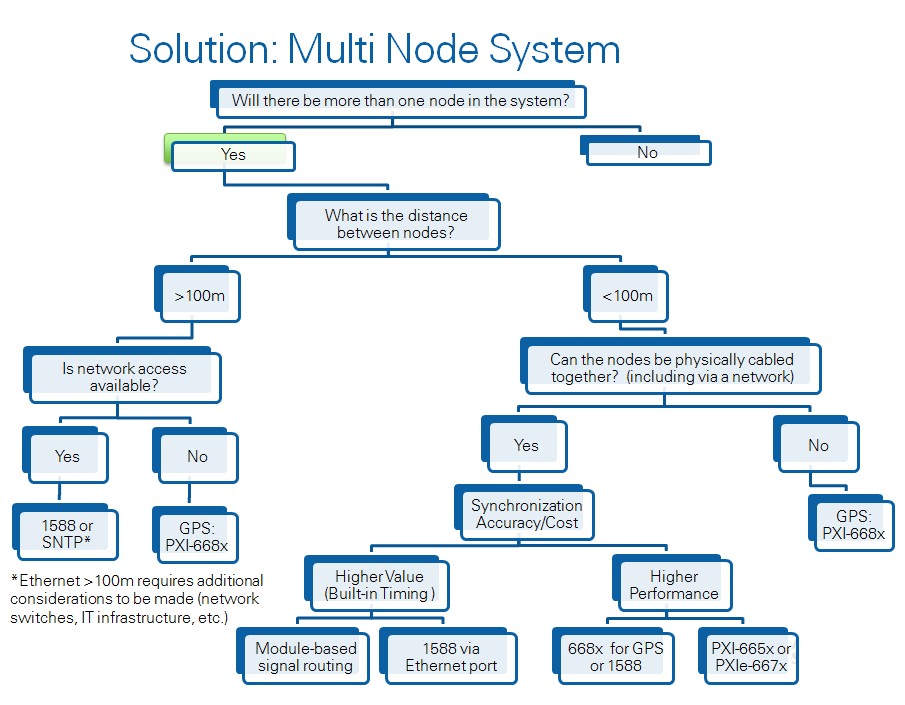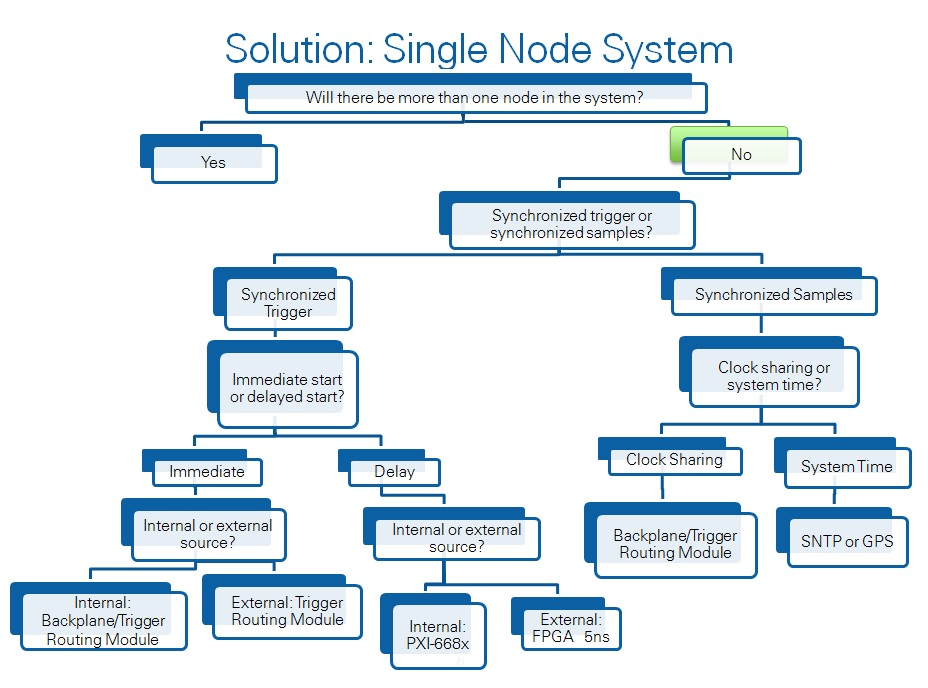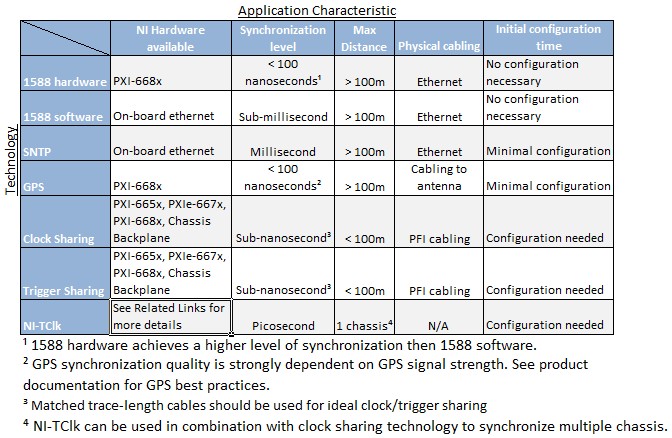Choosing a PXI Synchronization Technology
Overview
Contents
Flow Chart
These two flow charts aid in deciding technologies and hardware by using application specific questions to make recommendations. Additional assistance with the flow chart can be found in the "Guidance on Flow Chart Questions" section. Please note that this should only be considered a starting point for an application.
Figure 1: Flow chart for multi-node system.
NOTE: It is possible for systems to exist where nodes are positioned less than 100 meters away from some nodes and greater than 100 meters from other nodes. These types of systems may require implementation of more than one synchronization technology. We encourage customers developing this type of system contact National Instruments for assistance.
Figure 2: Flow chart for single-node system
NOTE: You can send a software command from code running on a node to target instruments, as a form of Software-Based Synchronization. This allows for synchronization without hardware dependencies, but the trade-offs include high latencies, lower synchronization accuracy, and depending on the operating system may not be deterministic.
Guidance on Flow Chart Questions
‘Is network access available?’ refers to the ability to connect to an Ethernet network. This hardware connectivity is required for certain synchronization methods. Note that internet connection is not implied by this question. The 1588 and SNTP technologies can both be implemented on a local network.
‘Can the nodes be physically cabled together’ refers to connecting the nodes with BNC, ethernet, or other standard cabling. This question is necessary to consider for applications where the physical distance between nodes is less than 100 meters, but the nodes are isolated in rooms/chambers that prevent direct cabling.
‘Synchronized Samples’ refers to each sample time being individually synchronized. This type of synchronization requires all sample clocks to be aligned.
‘Synchronized Trigger’ refers to the beginning of all acquisitions occurring at the same instant. This type of synchronization requires a start trigger to be distributed.
‘Immediate Trigger’ refers to a hardware trigger or user interaction that will immediately result in an acquisition start.
‘Delay Trigger’ refers to a trigger that is based off a system event (for example, a temperature reading being above a critical threshold).
‘Clock Sharing’ refers to distributing the hardware clock signal either within a node or between nodes.
‘System Time’ refers to synchronizing the system clock of the controller. This type of synchronization can be used when sub-millisecond precision is not necessary.
Hardware Considerations
While National Instruments provides a variety of synchronization cards, some technologies require integration with additional hardware in order to achieve optimal performance levels. Two technologies that have external hardware considerations are GPS and 1588.
GPS systems will require integration with GPS antennas. The antenna has a direct impact on the synchronization quality of the system. NI provides a GPS antenna as an add-on for products that support GPS synchronization (Part Number 196304-30).
For 1588 systems, there are two hardware considerations. The first is a limitation of ethernet cables. Standard CAT 5 cabling dictates that the maximum length for a cable segment should not exceed 100 meters. If nodes are situated further than 100 meters apart, switches or routers should be used to boost the signal. Switches and routers are readily available from a variety of vendors.
The second limitation of 1588 deals with the latency associated with highly trafficked networks. In these cases, packets may spend non-trivial amounts of time waiting at routers/switches. The solution is to use a 1588 switch. These are specifically designed to enable precise timing even over high throughput networks. More information on 1588 hardware can be found in the Related Links section.
Summary Table
The below table summarizes the capabilities of each synchronization technology


